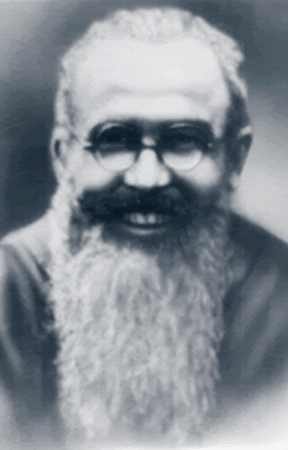Living life like the Max
 Today is the feast day of one of my favourite Saints, the great St. Maximilian Kolbe.
Today is the feast day of one of my favourite Saints, the great St. Maximilian Kolbe.
I’m not really sure why, but I can’t recall hearing stories of the lives of the Saints whilst I was growing up, despite being in Catholic education for most of my schooling. I actually first heard the story of Maximilian Kolbe whilst visiting a Protestant church. For me, this was an often-repeated irony, having actually been introduced as an adult to the Saints by a Baptist Pastor!
When I first heard his story in that Protestant church, Maximilian was quite-rightly held up as a model of Christ-like behaviour. Unfortunately, I also remember it was in a sermon where he was contrasted with another figure who was specifically identified as Catholic, whereas Maximilian’s background was not mentioned.
It was only when I started to read more about him and his story that I discovered that he was not only Catholic, but a priest and at that time, to my horror, someone with a very strong Marian devotion.
Max Life
Raymond Kolbe was born in Poland in 1894 and at the age of sixteen entered the Franciscan Order taking the name Maximilian. He had quite an incredible life. For example, he founded the Militia of the Immaculata. He and his brothers used the most modern printing techniques to produce countless tracts and a newspaper. I like to think that if he lived today, he’d have been the first Franiscan with a Blog.
However, it is certainly the story of his death for which he is best remembered.
Max Sacrifice
In 1941 he was imprisoned in Auschwitz by the Nazis. One day a prisoner escaped from the camp and, as part of the standard practice, ten prisoners were selected at random to be placed in the Bunker, an underground starvation cell. One of ten selected, Franciszek Gajowniczek, cried “Oh, my poor wife, my poor children. I shall never see them again”. However, Fr. Maximilian then stepped forward and offered himself in the man’s place. The other nine and Maximilian were then taken off to the bunker to die.
An eyewitness, Bruno Borgowiec, who was an assistant to the janitor tells what happened next:
“In the cell of the poor wretches there were daily loud prayers, the rosary and singing, in which prisoners from neighbouring cells also joined. When no SS men were in the Block, I went to the Bunker to talk to the men and comfort them…I had the impression I was in a church…
“Two weeks passed in this way. Meanwhile one after another they died, until only Fr Kolbe was left. This the authorities felt was too long; the cell was needed for new victims. So one day they brought in the head of the sickquarters, a German, a common criminal named Bock, who gave Fr Kolbe an injection of carbolic acid in the vein of his left arm. Fr Kolbe, with a prayer on his lips, himself gave his arm to the executioner.
“Unable to watch this I left under the pretext of work to be done. Immediately after the SS men with the executioner had left I returned to the cell, where I found Fr Kolbe leaning in a sitting position against the back wall with his eyes open and his head dropping sideways. His face was calm and radiant.”
Pope John Paul II canonized Maximilian as a “martyr of charity” in 1982, with Franciszek Gajowniczek, the man he had saved, present at the ceremony together with his family.
“My command is this: Love each other as I have loved you. Greater love has no one than this, that he lay down his life for his friends. You are my friends if you do what I command” – John 15:12-14
St. Maximillian, Ora Pro Nobis.